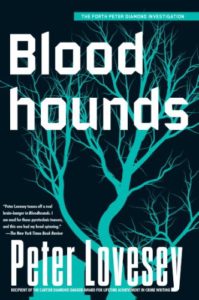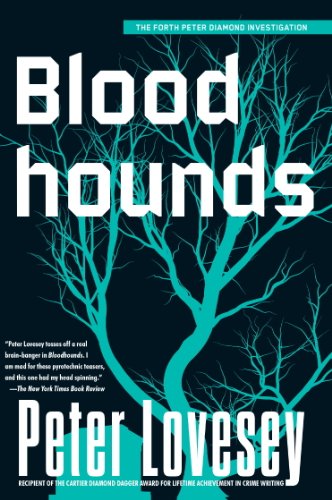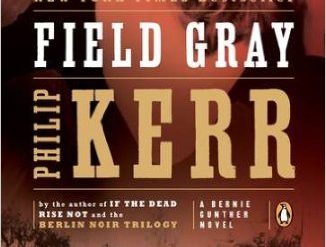
Writers of genre fiction tend to be widely read within their own narrow field. The British detective novelist Peter Lovesey is a prime example. In Bloodhounds, Lovesey demonstrates his familiarity with his genre, referring by name to a large number of prominent mystery writers. His novel is a send-up of several formulas familiar to readers of popular detective fiction. The locked room murder is the most notorious of these, and it figures as a central element in the novel’s convoluted plot.
A venerable series in detective fiction
Bloodhounds is the fourth book in Lovesey’s venerable series featuring Detective Superintendent Peter Diamond of the Avon and Somerset Constabulary, where he heads up the murder squad. Diamond, recently reinstated and promoted, is his usual irascible self. Though he is clearly a brilliant detective, his enormous size and his brusque treatment of those around him frequently inspire fear rather than respect. The sole exception is his favorite investigator and sidekick, Detective Inspector Julie Hargreaves. Bravely, she sometimes dares to talk back. Hargreaves, too, we know, is a brilliant detective—though perhaps a tad less so than her boss.
Bloodhounds (Peter Diamond #4) by Peter Lovesey ★★★★☆
Three baffling riddles
In Bloodhounds, a taunting riddle sent to the police and to all local news media seems to predict the imminent theft of the one extraordinarily valuable painting in Bath’s art museum. (It’s a typically gloomy landscape by the overrated British artist, J.M.W. Turner.) This is the first of three such riddles, each one of which serves as the key to one of the novel’s three parts. Though the early focus is on the promised theft, it’s no surprise that soon a murder takes place—perhaps related to the theft, or maybe not.
The Bloodhounds of the book’s title are a small group of mystery fans who meet weekly to recommend books to one another and argue about the relative merits of the field’s many subgenres (whodunits, thrillers, police procedurals, stories about amateur detectives, etc.). As the novel unfolds, the seven members of the group become the chief suspects in the theft—naturally, one does take place—and later fall under suspicion in the murder mystery as well. The Bloodhounds, four women and three men, include a cast of eccentric characters that could only be assembled in Great Britain. The tensions and suspicions among them enliven the story.
Bloodhounds is written with a lighter touch than the earlier Peter Diamond novels. Both the interactions among the amateur sleuths in the group and Diamond’s clumsy and sarcastic commentary are frequently funny. Any fan of mystery novels will enjoy reading Bloodhounds. Lovesey obviously had fun writing this book!
For related reading
You might also enjoy my posts:
- Top 10 mystery and thriller series
- 20 excellent standalone mysteries and thrillers
- 30 outstanding detective series from around the world
- Top 20 suspenseful detective novels
- Top 10 historical mysteries and thrillers
And you can always find my most popular reviews, and the most recent ones, on the Home Page.


























